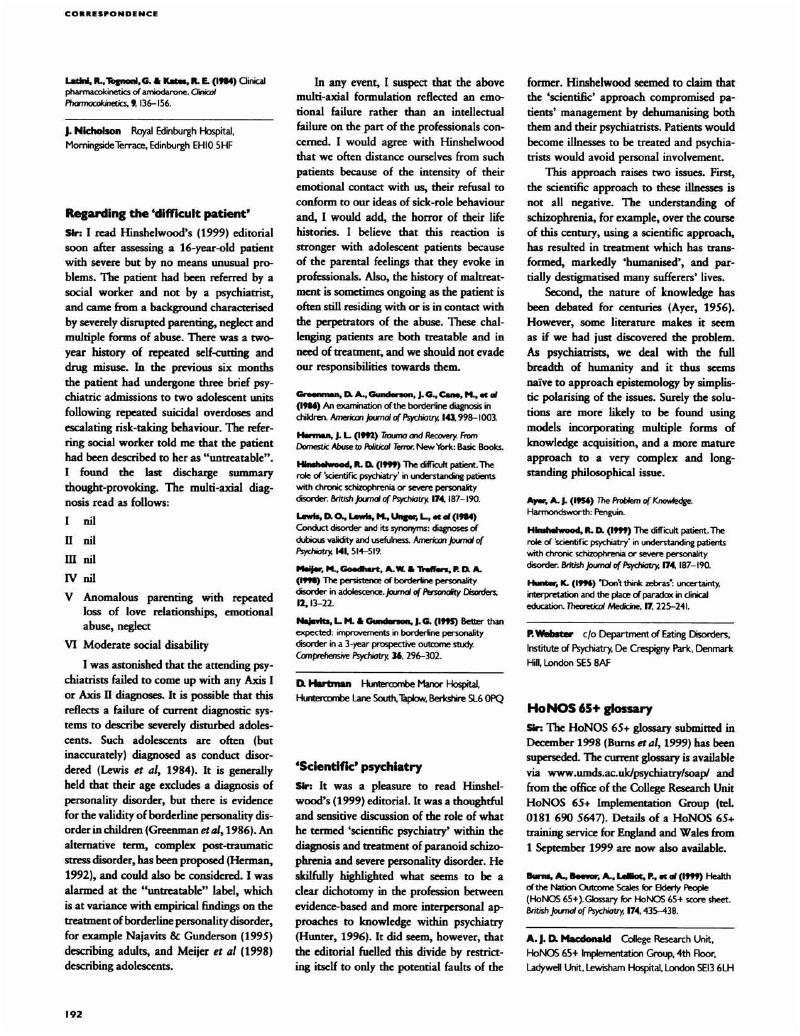Crossref Citations
This article has been cited by the following publications. This list is generated based on data provided by Crossref.
Koekkoek, Bauke
van Meijel, Berno
and
Hutschemaekers, Giel
2006.
"Difficult Patients" in Mental Health Care: A Review.
Psychiatric Services,
Vol. 57,
Issue. 6,
p.
795.
Chepenik, Lara G.
2015.
Difficult Patient Encounters: Medical Education and Modern Approaches.
Current Emergency and Hospital Medicine Reports,
Vol. 3,
Issue. 4,
p.
195.




eLetters
No eLetters have been published for this article.